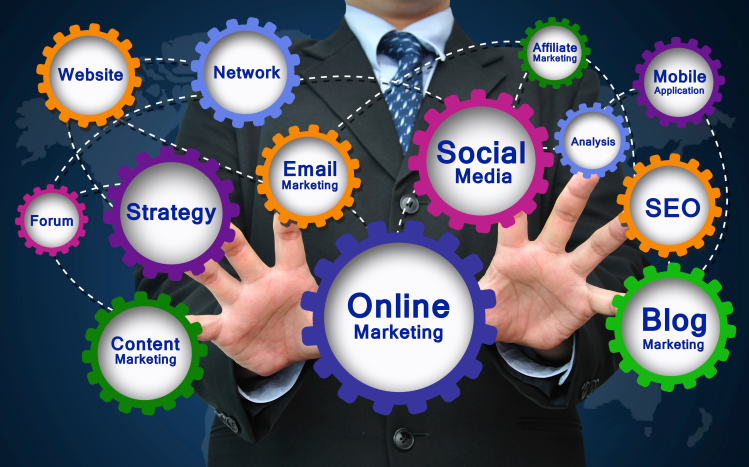
What does your website do? It is supposed to attract visitors and convert them into customers.
But, does it really do that?
Many websites do a great job of attracting visitors, but instead of converting them into customers, the site ends up repelling them and sending the visitors scrambling back to their search results to review a competitor.
So how can you make sure your website is set up to convert a website visitor into leads?
3 Seconds to Success (or Failure)
In 2012, researchers at Missouri University discovered that websites provide an initial impression in just two-tenths of a second. After that, visitors spent approximately 2.6 seconds focusing on that site and making a decision as to whether or not to stay on that site. That means you have a little less than 3 seconds to convince your visitors that you can satisfy their wants and needs.
How do you make a good impression in such a short period of time?
96% of your website visitors are not ready to buy. But, they came to your site, so it’s crucial that you earn their trust and show them that you can meet their desires and offer them what they need. In order to do that, you’ll need to invest time and energy converting those leads into customers through lead nurturing.
There are many different ways you can nurture your visitors and convert them into customers, but the most effective way is by creating a lead nurturing funnel – if done correctly, this will walk them through the process from exploring their options to buying your product!
Why You Need a Clean Call-to-Action
Your site’s visitors need to be engaged – you’ll lose customers if all your site offers is reading or buying options. Potential customers will need time to browse the site without feeling like they’re on a used car lot. However, that doesn’t mean you can’t point them in the right direction.
After reviewing traditional call-to-actions, using a benefit-oriented, personal CTA was the most effective. Make it clear to your audience that it doesn’t require any work, have the statement be phrased as a command so it can’t be overlooked, and make the button an eye-popping color like red. Test your CTA with variables, like color and phrasing to see what works best for your audience. Try adding urgency phrases like “Don’t wait another minute” or “Subscribe now.”

For a CTA to be the most effective, it should be simple, eye-catching, and be the next logical step for your audience. Buttons placed at the end of interactive content are more likely to be clicked on because it follows clear logic and the reader should be saying to themselves, “And now I’m supposed to click the button!” By using action words, it engages the audience’s brain to respond by following the action.
A 2012 study by Spanish researchers found that the brain is automated to react to sense-related words or phrases. Using verbs in your CTA text will alert the brain that it needs to react.
Clean, well-developed CTAs will increase your chances at converting site visitors to customers.
Your Website Should be About Your Customer, Not You
The easiest way to repel a visitor is to create a site that is tailored to you, and not about your customers. While this may seem like common sense, if you spend any time on the web, you’ll see sites making this mistake all the time.
How long does it take your site to load? Do you have complex graphics that slow your website’s loading time?
When it comes to your site’s speed, every second counts. A site that is delayed by just 1 second can suffer a -3.5% conversion rate. A few simple, yet essential, speed solutions may be right at your fingertips. Compression can have a huge impact on your page’s size and therefore its speed. This will eliminate approximately 50-70% of data that your visitor won’t have to download!
Free online services like csscompressor.com can be used to minimize your files and help with optimizing your site – it’s a great way to get rid of unnecessary coding. Opening up that free space will drastically improve your site’s speed. Little tricks like this will help keep visitors on your site.
Customers want a web page that loads fast and that gives them immediate solutions to their problem or information they are seeking. Your site may look amazing, but if it is slow to load or is hard to navigate, you will lose business. From the moment visitors land on your page, you need to have them hooked. Creating an effective landing-page is essential for your 3 second impression.

What does your site look like?
Everything from the colors to the fonts you choose should be focused on your customers. Use this opportunity to focus on aesthetic appeal and catchy titles. Having elements like a killer headline, persuasive text, and alluring graphics can give your landing page and website power over the visitor. This will lead them to exploring your site, where you can logically explain benefits of your products and convince the visitor that you can solve their problems.
Customer-focused websites are the easiest to navigate because they follow a logical flow. The site will clearly tell the visitor what your business does and answer their questions – it will take away all the guesswork. The perfect ending to your explanation and benefits is your CTA.
Give your visitors quick access to your best content that will answer their questions. This will show them that you are an expert. Showing is always more effective than telling.
Have a Variety of Content
What type of content do you consume? Most likely, you read books or magazines, watch TV, and listen to music or audiobooks.
All of us learn differently and have different content consumption preferences. If you want to attract customers, share your message in a variety of different formats. This could include (but certainly not limit!) blogging, videos, and infographics. By offering different types of content, you are allowing your site to attract a more varied customer base.
Having different types of content is a powerful tool for three main reasons.
- It gives you the chance to create several different pieces of content from the same information. Search engines loves this and will help improve search engine rankings.
- The more varied the content types, the more outlets you have for distributing your content. This gives you more avenues to reach out to your target audience.
- Having different types of content gives you the chance to engage with people all stages of the sale funnel.

Having blogs on your site is great for SEO, but including different types of interactive content will engage your customers even more. Interactive infographics cater to the kinetic learners – they are encouraged to keep clicking or scrolling to reveal more information. Providing e-books also boosts the visitor’s value of content, positioning your business as more of an authority. This can earn their trust and increase website visitors to lead conversions.
The most important thing about having your content types be interactive is that they all contain a common thread tying them together – “Yes.” Every time a site visitor clicks or progresses through your content, they are giving a subtle “micro-yes.” You are successfully earning their trust with every click. Studies have shown that interactive content generate conversions 70% more effectively than passive content. After a visitor completes a piece of interactive content, they are much more likely to click on a CTA or fill out a form – therefore conversion goes up!
Take a look at your site and try to image looking at it as one of your visitors would.
Is the site easy to use and does it communicate what you do quickly? How fast does it load? Does the website have a clean call-to-action? Is there a variety of content that is easy to find?



